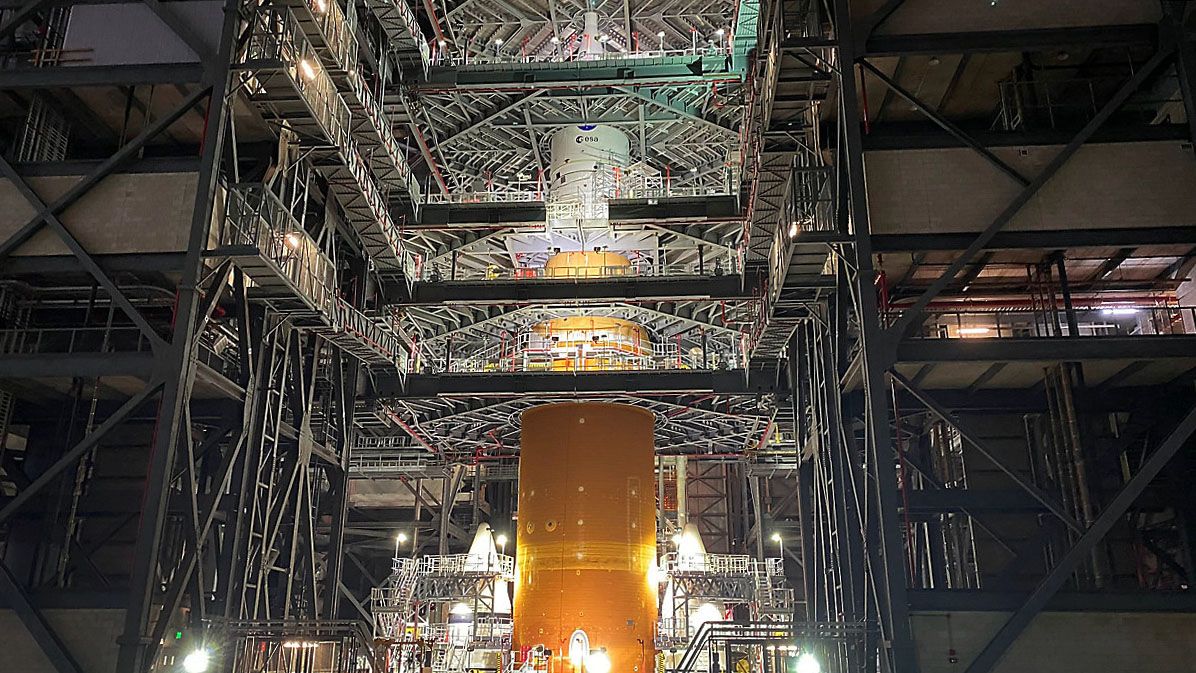CAPE CANAVERAL, Fla. — The highly anticipated launch of the first mission in the Artemis program is potentially only a couple months away, but before that happens, NASA needs to work through an issue with one of the rocket’s four RS-25 engines that power the core stage of the rocket.
During a series of systems tests and checkouts, NASA’s Space Launch System (SLS) team encountered a problem with part of the avionics that controls engine four.
A NASA spokesperson told Spectrum News 13 that during the week of November 22, the SLS team “could not verify communication between the flight computers and the engine controller for engine number 4,” but that prior to that week, “the engine four controller was powered up and communicated with the rocket’s flight computers as expected.”
The engine controller is described by NASA as “an avionics unit that controls engine operation and communicates with other avionics systems in the vehicle.”
The RS-25 engines are built by Aerojet Rocketdyne. The first three rockets for the Artemis program will use 16 engines originally developed for the Space Shuttle program.
Teams from both NASA and Aerojet Rocketdyne are troubleshooting the issue at the Vehicle Assembly Building at NASA’s Kennedy Space Center in Florida.
A spokesperson for Aerojet Rocketdyne said the teams “hope to issue an update by the end of the week.”
Impact on timeline?
As of now, it’s not clear if or how this will impact the targeted “no earlier than” launch date for SLS of February 12, 2022 from Launch Complex 39B at KSC.
NASA said that they are currently targeting mid-January for rollout to the pad for the Wet Dress Rehearsal Testing, which involves loading the propellants into the rocket, going through the launch countdown, repeating back at the point of T-10 minutes to demonstrate that they can scrub a launch if necessary and then de-tanking the propellants.
A “no earlier than” date of December 29 was previously published for a rollout date.
Prior to the wet dress, the Exploration Ground Systems (EGS) team, those who oversaw the assembly of all the pieces of the SLS rocket, will go through a few other series of tests.
Those include the Interface Verification Testing, the Program Specific Engineering Testing, End-to-End Communications Testing and Countdown Sequence Testing.
“We definitely want to do our (communications) end-to-end tests in December and that’s what we’re driving our team to go do,” said Lili Villareal, the operations flow manager for EGS in a November 5 interview with Spectrum News 13. “All the other tests we can definitely move around, but that’s one of our tests that we really want to make sure we do some time in December.”
SLS teams completed stacking of the 322-foot-tall rocket back in October and began working through the testing process.
The first launch of SLS as the Artemis I mission will be without crew and the Orion spacecraft will travel to the moon and back.
https://www.nasa.gov/sites/default/files/thumbnails/image/artemis_1_map_october_2021.jpg



